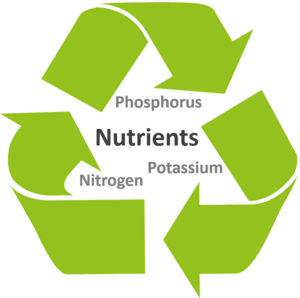Nutrient recycling
The direct use of agricultural residues as organic fertilizer (e.g. manure and digestate from biogas plants) to close nutrient cycles faces several challenges. Crops can only absorb nutrients to a limited extent and the nutrients are easily washed out by heavy rain events. Some of them are washed into the adjacent bodies of water and can cause eutrophication. The German fertilizer ordinance (Düngemittelverordnung), therefore, limited the amount of organic fertilizer that can be applied to agricultural land. As a result of the regulation, a strong regional oversupply of manure and digestate is frequently found and large amounts of wet residues are already being transported over long distances.
Hydrothermal carbonisation (HTC) is an alternative treatment for these residues by immobilizing phosphorus on hydrochar under optimal conditions. Leaching of the hydrochar with acid dissolves the phosphorus which can then be precipitated with nitrogen forming magnesium ammonium phosphate (MAP) – or struvite - as a ready-to-use fertilizer. Hydrochar can also be used as structural material in horticultural substrates, e.g. as a substitute for peat.
